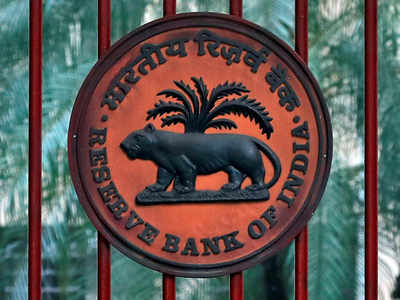- News
- Business News
- India Business News
- In a first, RBI allows KYC process on mobile video
Trending
This story is from January 10, 2020
In a first, RBI allows KYC process on mobile video
In a move that will enable banks and fintechs onboard customers remotely, RBI has amended its norms to allow the ‘know your customer’ (KYC) process to be completed through a mobile video conversation. The central bank has also facilitated eKYC and digital KYC by allowing use of Aadhaar or other e-documents in the customer due diligence process.

MUMBAI: In a move that will enable banks and fintechs onboard customers remotely, the Reserve Bank of India (RBI) has amended its norms to allow the ‘know your customer’ (KYC) process to be completed through a mobile video conversation. The central bank has also facilitated eKYC and digital KYC by allowing use of Aadhaar or other e-documents in the customer due diligence process.
This makes India one of the rare markets to allow video KYC through an amendment to the RBI rules after the government amended the Prevention of Money Laundering (Maintenance of Records) Rules, 2005.“I think this is a world first where the regulator has allowed video KYC. Banks can onboard customers by doing a video KYC through the app and acquiring Aadhaar and PAN. Non-banks, although they don’t have access to eKYC, can complete the process by using the physical Aadhaar or the QR code,” said Naveen Surya, chairman of Fintech Convergence Council, which has been pushing for this.
After eKYC using Aadhaar was discontinued following a Supreme Court decision, mobile wallets found it difficult to onboard new customers. In a circular issued on Thursday, the RBI said, “Digital KYC has been defined as capturing live photo of the customer and officially valid document or the proof of possession of Aadhaar, where offline verification cannot be carried out, along with the latitude and longitude of the location where such live photo is being taken by an authorised officer of the reporting entity (RE).”
Reacting to the circular, NITI Aayog chief Amitabh Kant said in a tweet, “Great initiative by RBI! Circular on video based customer identification process will make presence-less and paperless banking a reality. The circular is a huge positive step towards Prime Minister Narendra Modi’s goal of Digital Financial Inclusion.”
The central bank has said that the KYC process cannot be outsourced to any third-party service provider and the audio-visual interaction must be triggered from the domain of the regulated entity itself. Also, the video customer identification has to be done by officials trained for this purpose and the video recordings preserved.
“Regulated entities are encouraged to take assistance of the latest available technology, including artificial intelligence (AI) and face-matching technologies to ensure the integrity of the process as well as the information furnished by the customer. However, the responsibility of customer identification shall rest with the RE,” the RBI said.
This makes India one of the rare markets to allow video KYC through an amendment to the RBI rules after the government amended the Prevention of Money Laundering (Maintenance of Records) Rules, 2005.“I think this is a world first where the regulator has allowed video KYC. Banks can onboard customers by doing a video KYC through the app and acquiring Aadhaar and PAN. Non-banks, although they don’t have access to eKYC, can complete the process by using the physical Aadhaar or the QR code,” said Naveen Surya, chairman of Fintech Convergence Council, which has been pushing for this.
After eKYC using Aadhaar was discontinued following a Supreme Court decision, mobile wallets found it difficult to onboard new customers. In a circular issued on Thursday, the RBI said, “Digital KYC has been defined as capturing live photo of the customer and officially valid document or the proof of possession of Aadhaar, where offline verification cannot be carried out, along with the latitude and longitude of the location where such live photo is being taken by an authorised officer of the reporting entity (RE).”
Reacting to the circular, NITI Aayog chief Amitabh Kant said in a tweet, “Great initiative by RBI! Circular on video based customer identification process will make presence-less and paperless banking a reality. The circular is a huge positive step towards Prime Minister Narendra Modi’s goal of Digital Financial Inclusion.”
Once the Aadhaar has been used, the regulated entity must either edit out or blackout the Aadhaar number. The e-document has been defined as an electronic equivalent of an officially valid document with its valid digital signature, including documents issued to the digital locker account of the customer.
The central bank has said that the KYC process cannot be outsourced to any third-party service provider and the audio-visual interaction must be triggered from the domain of the regulated entity itself. Also, the video customer identification has to be done by officials trained for this purpose and the video recordings preserved.
“Regulated entities are encouraged to take assistance of the latest available technology, including artificial intelligence (AI) and face-matching technologies to ensure the integrity of the process as well as the information furnished by the customer. However, the responsibility of customer identification shall rest with the RE,” the RBI said.
End of Article
FOLLOW US ON SOCIAL MEDIA















